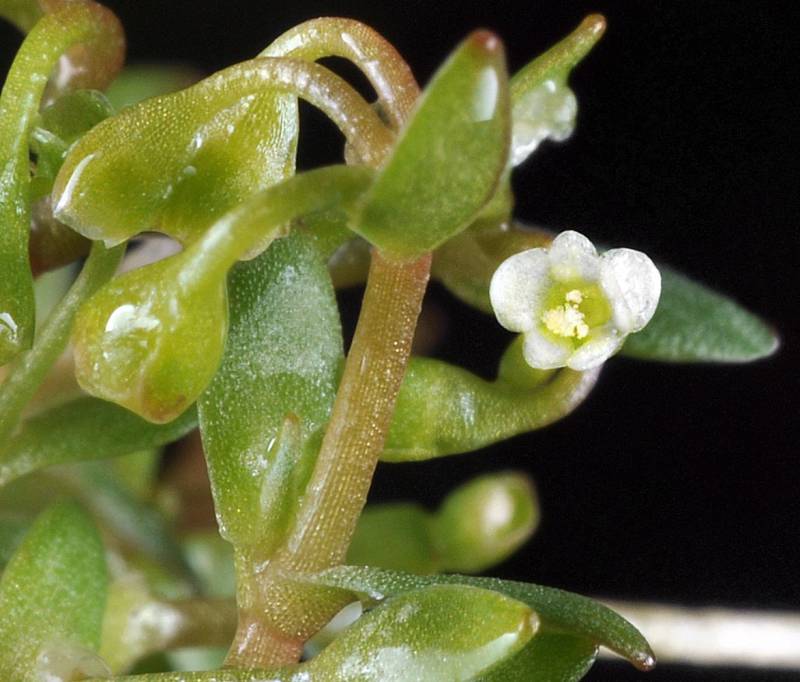Distribution: Occurring west of the Cascades crest in Washington; British Columbia to California.
Habitat: Moist lowland areas.
Flowers: April - May
Origin: Native
Growth Duration: Annual
Conservation Status: Not of concern
Pollination: Bees, flies
Low annual with freely-branched, spreading stems 2-6 cm. long, often rooting at the nodes.
Leaves alternate, linear-spatulate to linear-oblanceolate, 5-20 mm. long and 0.5-1.5 mm. wide.
Flowers in clusters of 3-5 along the stem in the axils of scarious bracts opposite the leaves, the bracts often attached to the leaves and resembling sheathing stipules; pedicels 1-5 mm. long, recurved; sepals 2, 1 mm. long; petals white, 2-5 or wanting, about equal to the sepals; stamens 2 or 3; style 1, short, the stigmas 3, sessile.
Flowers in clusters of 3-5 along the stem in the axils of scarious bracts opposite the leaves, the bracts often attached to the leaves and resembling sheathing stipules; pedicels 1-5 mm. long, recurved; sepals 2, 1 mm. long; petals white, 2-5 or wanting, about equal to the sepals; stamens 2 or 3; style 1, short, the stigmas 3, sessile.
Publication: Proc. Amer. Acad. Arts. 18: 191. 1883.
Maxia howellii (S. Watson) Ö. Nilsson
Montiastrum howellii (S. Watson) Rydb.
PNW Herbaria: Specimen records of Montia howellii in the Consortium of Pacific Northwest Herbaria database
WA Flora Checklist: Montia howellii checklist entry
OregonFlora: Montia howellii information
E-Flora BC: Montia howellii atlas page
CalPhotos: Montia howellii photos




















